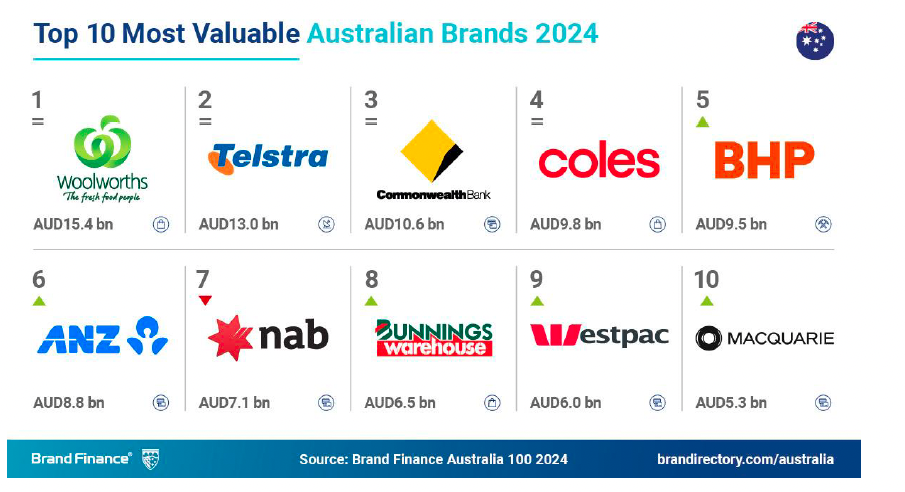The CMO Awards podcast ep3: ‘Brand is the unit of value creation’: Lion co-MD Anubha Sahasrabuddhe, McCain growth chief Olivia Dickinson, SiteMinder’s Trent Innes on chief growth recipes – and pitfalls to avoid
What you need to know:
- In the latest CMO Awards podcast episode, three transformational growth leaders – Lion’s Anubha Sahasrabuddhe, SiteMinder’s Trent Innes and McCain and former Chobani’s Olivia Dickinson – detail how they have tackled the growth agenda inside their organisations.
- Having all held the ‘growth’ title, the trio says their roles signalled an organisation-wide commitment to pursue new opportunities and disruption in order to lead their companies in a new direction.
- While the challenges of beer maker, yoghurt producer and software-as-a-service company are all different, the three agree pursuing growth means making hard commercial decisions, killing off pet projects and getting firm on what you’ll say no to, improving agility of decision-making and delivery, and finding common language and alignment across cross-functional teams.
- In Lion’s case, recognition it wasn’t match fit for changing consumer tastes led to finding strategic clarity, the right people and culture, and a 500-day growth challenge that saw a faster-than-average new product line become a top five beer brand in Australia.
- For Chobani, the burning platform was also changing consumer tastes and led to a new No Sugar Added product created and on shelf in 20 weeks. But importantly, connecting the growth team and existing business was critical, says Dickinson, who describes the approach as a “relay race”.
- At SiteMinder, adopting a common language, removing functional silos and recognising the right customers for lifetime value are helping remove the blame game between teams and ensures growth is a unified effort inside the SaaS company, says Innes.
- Saharsabuddhe, Innes and Dickinson also agree brand plays a critical role internally and externally in realising growth. Per Sahasrabuddhe: “Brand is the unit of value creation. I’ve spent four years reorienting the organisation towards understanding the source of value is our brands. Anyone that thinks transformation is led by getting a better IT solution, or moving supply chain faster, is failing to acknowledge the role of brand in being able to generate that value.”
- Listen to the podcast here.
Brand is the unit of value creation. I’ve spent four years reorienting the organisation towards understanding the source of value is our brands. Anyone that thinks transformation is led by getting a better IT solution, or moving supply chain faster, is failing to acknowledge the role of brand in being able to generate that value.
At its core, the job of the CMO is to deliver business growth. And if Mi3’s story on marketing jobs and what company CEOs want in their marketing hires in 2025 is anything to go by, there is a recalibration back to topline growth rather than just pure cost cutting and efficiency, coming our way – good news for marketers, potentially.
Yet companies are favouring alternative job titles, such as chief growth officer and chief customer officer, or creating new functional structures and ways of working to set the north star and signal the need for disruptive, transformational growth. At the same time, diversity in marketing remits makes it difficult to understand what levers marketing chiefs will actually control in their pursuit of growth for a business.
In Episode 3 of the CMO Awards podcast, powered by Mi3, three marketing and business luminaries with the mantle of delivering net new approaches to growth, share how they defined then pursued that ambition: Lion co-MD and former chief growth officer and CMO, Anubha Sahasrabuddhe; SiteMinder chief growth officer, Trent Innes; and recently installed McCain growth marketing director and former Chobani GM of growth, Olivia Dickinson.
All agree putting ‘growth’ front and centre in job titles beyond marketing sends an unambiguous message as to a company’s intent to pursue new opportunities and embrace the disruptive nature of what is required. By having a more strategic growth agenda, each executive also has the power to make the hard decisions necessary to deliver sustainable growth. Because that’s the key bit: You have to know what to say no to and stick to it.
In Lion’s case, generational shifts around beer consumption provided a burning platform for change. At Chobani, pursuing agility in product innovation pipelines, with the aim of following no-sugar consumer trends, paved the path to new growth – even amid fears of cannibalising existing SKUs. Over at Australian hotel management SaaS vendor SiteMinder, sustainable growth equates to a team sport, with formerly distinct functions adopting a common language, rethinking go-to-market strategies, and going beyond winning customers to seek out those with the strongest lifetime value.
While each example is a lesson in whole-of-business shape-shifting, all present useful learnings for marketers looking to better align their efforts to company growth, not just functional success.
[Firstly] diversity of thought, and skills and capabilities from vast and varied industries, not just our own, was the bedrock. We went through a lot of painful, tough people choices to set a very clear message of difference and in the service of growth. Secondly, strategic clarity: What business are we in and what are we not going to do? That led to a ceremony and killing off of all pet projects and distractions. The third thing was radical transparency and investment choices. In an organisation as large as ours, silos are very easily formed, and there are secret Black Box war chests everywhere. Unlocking the transparency of investment decisions and deployment of resource … was a very necessary confrontation of reality.
Lion: The 500-day growth challenge
Sahasrabuddhe describes the 500-day growth challenge she’s spearheaded at Lion as a strong, enterprise-wise signal things will be done differently. The aim was to demonstrate value within 500 days by aligning behind plans that would ensure the FMCG giant delivers for future generations.
“The recognition was we weren’t match fit and in order to create and inspire growth, we were going to have to approach things in a very different way. That was our why,” she says.
“First and foremost, it’s about the type of leaders you bring around you, and the need to recognise that business as usual was not working for us. Diversity of thought, and skills and capabilities from vast and varied industries, not just our own, was the bedrock of that,” Sahasrabudde continues. “We went through a lot of painful, tough people choices to set a very clear message of difference and in the service of growth.
“The second one is strategic clarity: What business are we in and what are we not going to do? That led to a ceremony and killing off of all pet projects and distractions. The third thing was radical transparency and investment choices. In an organisation as large as ours, silos are very easily formed, and there are secret Black Box war chests everywhere. Unlocking the transparency of investment decisions and deployment of resource, again in service of growth, was a very necessary confrontation of reality in order to get to a different place.”
Fuelling Lion’s growth fire was brilliant brands and culture, world-class customer execution and ruthless efficiency.
Sahasrabuddhe says the business said no to plenty. “We divested quite a few businesses because they weren’t part of the core. The second thing we said no to was a culture where business case and benefit realisation wasn’t at the heart of how we invest,” she says. “Right from the ground up, it was building a mindset of ownership as investors and owners, which is in our heritage and our DNA.”
None of this meant abandoning the core of Lion’s business: beer. “At the core of Lion is still a really vibrant beer business, so there needs to be a reaffirmation of the vital importance of having a healthy core and a belief that the core can grow with different choices and different capabilities,” continues Sahasrabuddhe.
“Then it was about defining the relevant adjacencies where we have a right to win and a profit pool to go after. With ultimate clarity, that allows the decision making of what to say no to. It makes it very clear, and avoids emotional decision making, which is prevalent in any organisation. I can tell you, in the alcohol industry, there’s a lot of emotion, passion, and sometimes not necessarily the wisest choices historically.”
The first result of this work was the debut of Kirin Hyoetsu, one of Lion’s parent company’s brands in Japan, redeveloped for the ANZ market in nine months. That’s more than three times faster than the usual R&D cycle.
“This was about breaking some eggs to demonstrate we could actually shift and challenge existing paradigms and actually show there was value to be created, if we could get the entire value chain from our parent company all the way to our supply chain, to actually do the opposite of what they typically would have done,” Sahasrabuddhe says.
“We set that challenge in early 2023, we launched in August, and we’re number five in the Australian market, number one in the New Zealand market. And we were late to market. We own that. It was a great way to set up the rest of our growth initiatives by showing it’s possible if you’re willing to challenge and play a team sport.”
When you don’t have a common goal set, what happens quite often is you end up in a blame game – sales couldn’t make their number because marketing didn’t market the product well, or product didn’t build the product we asked for in the first place. So you end up in this cycle of blame, rather than the cycle of what I call empathy. And when you have empathy, you can lean in and ask genuine questions, give genuine feedback in a safe and constructive way. Then everyone gets on-board and you start moving in the right direction.
SiteMinder: Win, love, grow
At 20-year-old Australian hotel management software-as-a-service company, SiteMinder, growth is encapsulated in the phrase ‘win, love and grow’. “It’s not just a simple case of winning them [customers]. You actually need to love them. And if you actually do that, you have the opportunity to grow with them,” says Innes.
Upon joining SiteMinder 18 months ago, Innes was eager to challenge what he saw as “fake growth” across the technology industry. “Everyone was saying you had to grow, grow, grow. But a lot of it hadn’t been defined well,” he recalls. “There were many times people were bringing on the wrong customers… the economics were blowing out.”
With churn the enemy of SaaS businesses, Innes knew it was critical to get back to winning the long-term customer. “There are some segments we just didn’t have a good product market fit for, and you’re battling but eventually just end up with an unhappy customer. It’s about winning and focusing on the areas where you have the best opportunity to win in a sustainable, economically viable way,” he says.
“Markets have changed quite significantly. Historically, most go-to-market models were built on product designs: A product engineer builds the product; they throw it over the fence to marketing; marketing market the product; they throw it over the fence to sales; they sell the product; they throw it over the fence to onboarding, who try to implement the customer; they throw it over to support. But our customers don’t care. They don’t care about that [process]; you’ve got all these different departments, but all customers see is your brand and the product you represent to them.”
The biggest challenge and transformation for Innes was getting people to believe growth is a team sport. “Everyone’s involved in growth. It’s not the job of the marketer, it’s not the job of sales, it’s not the job of onboarding, then all the other departments support all those. It’s actually a team sport, and that’s really where the job title comes from.”
Innes sees having a ‘chief growth officer’ as a much more holistic way of looking at business. “More importantly, looking at the way your customers want to engage and work and grow with you as well. So it has got a real customer lens as well as an internal lens to it,” he says.
Innes also suggests marketers too commonly fall into the trap of generating short-term demand instead of thinking about customer lifetime value.
“I think marketing has fallen a bit too much into the ‘we’re here to create demand’ position… Growth is not demand, it’s not sales. It is a team sport, so it has to be across the entire business,” he says.
Which is why Innes advises marketers to think like a CEO and to “try to get outside of your lane and think about the broader business”. “How does the broader business look at marketing, and what role do you play in growth?” he asks. “For marketing leaders moving forward to remain relevant, they’re going to have to start thinking like that.”
To get to where SiteMinder needs to go, it must have shared goals and objectives that translate between different departments. Innes says having a common language might sound simple, but it’s been one of the big shifts for the vendor since he’s joined – and it’s what is accelerating the business more quickly.
“There is no point marketing creating a whole lot of MQLs [marketing qualified leads] and fist pumping the air going, ‘we’ve done so well!’” Innes adds. “You don’t want people coming in thinking that if their department wins, it’s a win for the entire business. That’s not the way it works.
“When you don’t have a common goal set, what happens quite often is you end up in a blame game – sales couldn’t make their number because marketing didn’t market the product well, or product didn’t build the product we asked for in the first place. So you end up in this cycle of blame, rather than the cycle of what I call empathy. And when you have empathy, you can lean in and ask genuine questions, give genuine feedback in a safe and constructive way. Then everyone gets on-board and you start moving in the right direction.”
I said to the team, let's give ourselves 20 weeks from when we started it to launch… if we get to 9th September and we can't answer the business-critical questions about proposition, margin, cannibalisation, portfolio, segmentation, all the questions within the business, we will pull the plug. No ego, no drama. It wasn't just about how we make a game -hanger for consumers, but how we make sure this is a smart business move.
Chobani: Following consumer tastes, not BAU
McCain’s Olivia Dickinson describes growth in three words: “Bold, strategic choices”.
“We’re talking bold bets, sharp focus, but really importantly, knowing when to walk away if it doesn’t serve the bigger picture,” she says.
All three came into play when she stepped into the GM of growth position at Chobani and set up a cross-functional team to pursue disruptive innovation beyond BAU.
“It was about zooming out and looking at the business, seeing not just what was happening, but more importantly, what wasn’t,” she explains. Like Lion, the challenge was BAU wasn’t going far enough at Chobani. Consumer tastes were increasingly leaning to no-sugar and other high protein food options, and it was time to step out of the classic business trap of sticking with the same things, day in, day out.
“I had to reorganise, not just as an organisation for today, but for where we wanted to get to. That meant building this cross-functional team across insights, R&D, product, finance, box packaging, within an external team still internal within the business, pulling people across from category and supply chain,” Dickinson continues. “Interestingly, when we first set it up, I thought we needed to be separated enough from the business to be focused and taken away from the busy-ness of the day jobs.”
But she learned quickly her team couldn’t be disconnected from the business, and that growth can’t live in isolation. “If we’re really real about it, a growth plan without that execution to flow through from the business is just an absolute pipe dream,” Dickinson says.
Chobani’s operations lead, who knew the factory inside out, became the conduit between the two-speed teams.
“When we’d work on something and it would come to fruition – and we were working really quick on what we would call sprints and missions because we talk about growth in this real momentum and energising way – that point of contact could go into the factory, could talk to our ops team, could talk to our engineers and really make sure there was this clear ‘exchange zone’. Like a relay race, we’d have this all-hands, where we’d have that handover,” Dickinson says. “There is a part of that process where both teams – growth working alongside the business – are running together, holding that baton until there’s that handover point.”
A key product line realised through the new structure was Chobani’s No Sugar Added product range, which ended up generating half of all business growth in its first year.
“But outside of the numbers, that’s not why I think I’d carry it with me,” says Dickinson. “We could see one in three consumers never came back for a second purchase when they were looking at these functional offers – and that for us wasn’t loyalty. There was a missed opportunity in that. So we set out to create something.”
According to Dickinson, the hardest part was cutting through the noise internally, because Chobani already had an existing offer within the portfolio with similarities to the new no-sugar component.
“I knew we had to earn the right to launch that every step of the way. We would build what I’d call a safe space within a pressure cooker. I said to the team, let’s give ourselves 20 weeks from when we started it to launch… if we get to 9th September and we can’t answer the business-critical questions about proposition, margin, cannibalisation, portfolio, segmentation, all the questions within the business, we will pull the plug. No ego, no drama,” Dickinson says. “It wasn’t just about how we make a game-changer for consumers, but how we make sure this is a smart business move.”
Dickinson paraphrases the late, great Oliver Reed’s Prospero in Ridley Scott’s 2000 epic, Gladiator: ‘Win the crowd, win the trust’. “That’s really important. How do you shift those mindsets and as a growth leader, build those relationships, listen and lean into the challenges and the questions? Because that transformation in the thinking, execution and how that lands in results, and doing that together as a team and as a business, that is what growth is really about.”
The brand multiplier
All three marketers agree brand is an essential element in the growth mix.
“I think brand and growth need to move in lockstep – one fuels the other,” comments Dickinson. “In everyday growth, brand helps build that relevance and consistency. But when you start aiming for transformational growth, there’s a component where brand becomes the catalyst. And that starts to shift from being just a reflection of what the business is, to an express of what the business aspires to become.”
Innes believes brand unites not just the business, but also what your organisation stands for in market – bringing together internal and external into the same ambition. Sahasrabuddhe adds brand has been at the heart of transformation at Lion.
“Brand is the unit of value creation. I’ve spent four years reorienting the organisation towards understanding the source of value is our brands,” she says. “Anyone that thinks transformation is led by getting a better IT solution, or moving supply chain faster, is failing to acknowledge the role of brand in being able to generate that value.
“We’ve gone through a long journey of making sure people understand brand power is pricing power, which is the exact tie to revenue, to gross margin, to everything. That education and advocacy, where marketers have to come out of the BS of just creative and actually be able to tie brand and creativity to value generation in a really tangible thread, is where the power is unlocked.”





